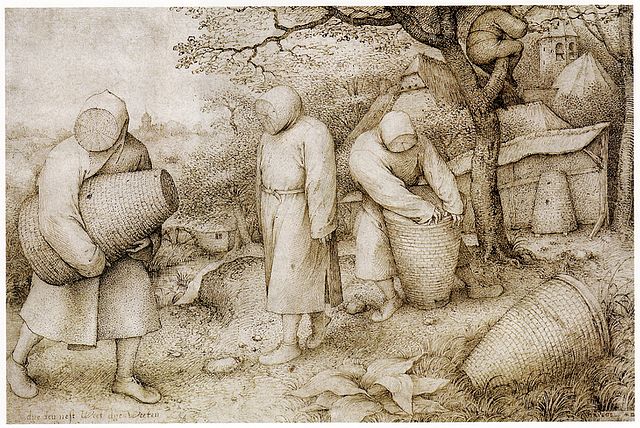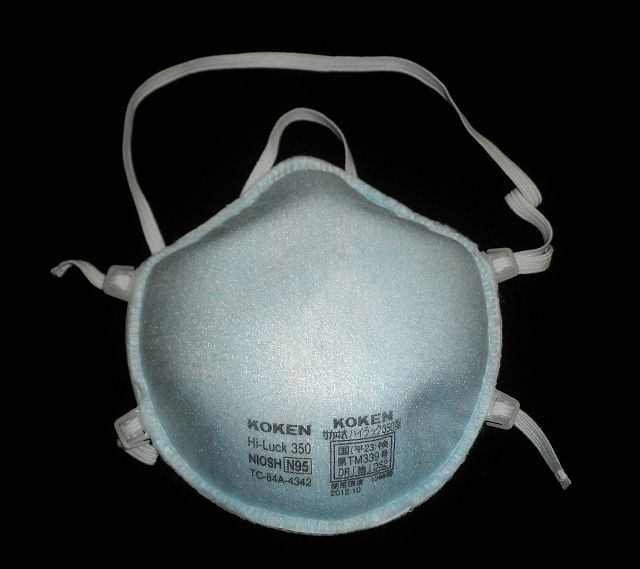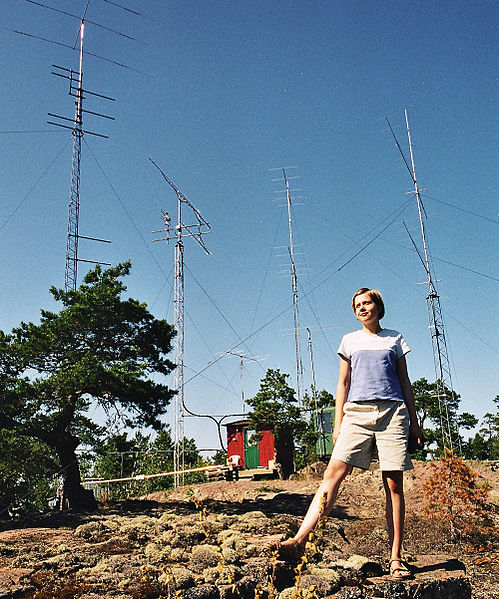Personal protective equipment
Personal protective equipment (PPE) is protective clothing, helmets, goggles, or other garments or equipment designed to protect the wearer's body from injury or infection. The hazards addressed by protective equipment include physical, electrical, heat, chemical, biohazards, and airborne particulate matter. Protective equipment may be worn for job-related occupational safety and health purposes, as well as for sports and other recreational activities. Protective clothing is applied to traditional categories of clothing, and protective gear applies to items such as pads, guards, shields, or masks, and others. PPE suits can be similar in appearance to a cleanroom suit.
Drug Enforcement Administration (DEA) agents wearing Level B hazmat suits
Safety equipment and supervisor instructions at a construction site
A 1568 painting depicting beekeepers in protective clothing, by Pieter Brueghel the Elder.
N95 mask
Clothing is any item worn on the body. Typically, clothing is made of fabrics or textiles, but over time it has included garments made from animal skin and other thin sheets of materials and natural products found in the environment, put together. The wearing of clothing is mostly restricted to human beings and is a feature of all human societies. The amount and type of clothing worn depends on gender, body type, social factors, and geographic considerations. Garments cover the body, footwear covers the feet, gloves cover the hands, while hats and headgear cover the head, and underwear covers the private parts.
Clothing in history, showing (from top) Egyptians, Ancient Greeks, Romans; Byzantines, Franks; and thirteenth through fifteenth century Europeans
A kanga, worn throughout the African Great Lakes region
Hindu lady wearing sari, one of the most ancient and popular pieces of clothing in the Indian subcontinent, painting by Raja Ravi Varma
A young woman wearing t-shirt and shorts at the warm summer in Åland








